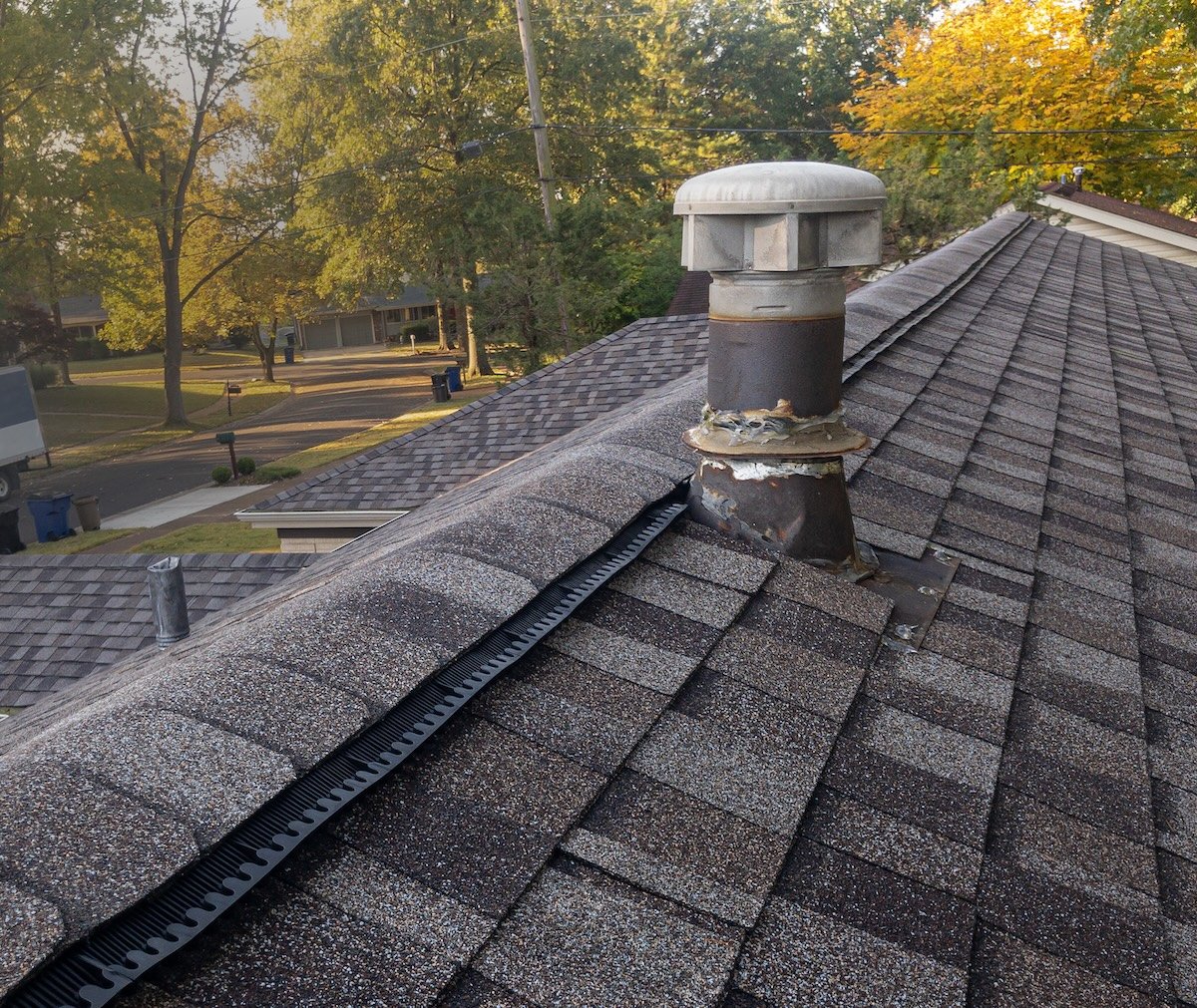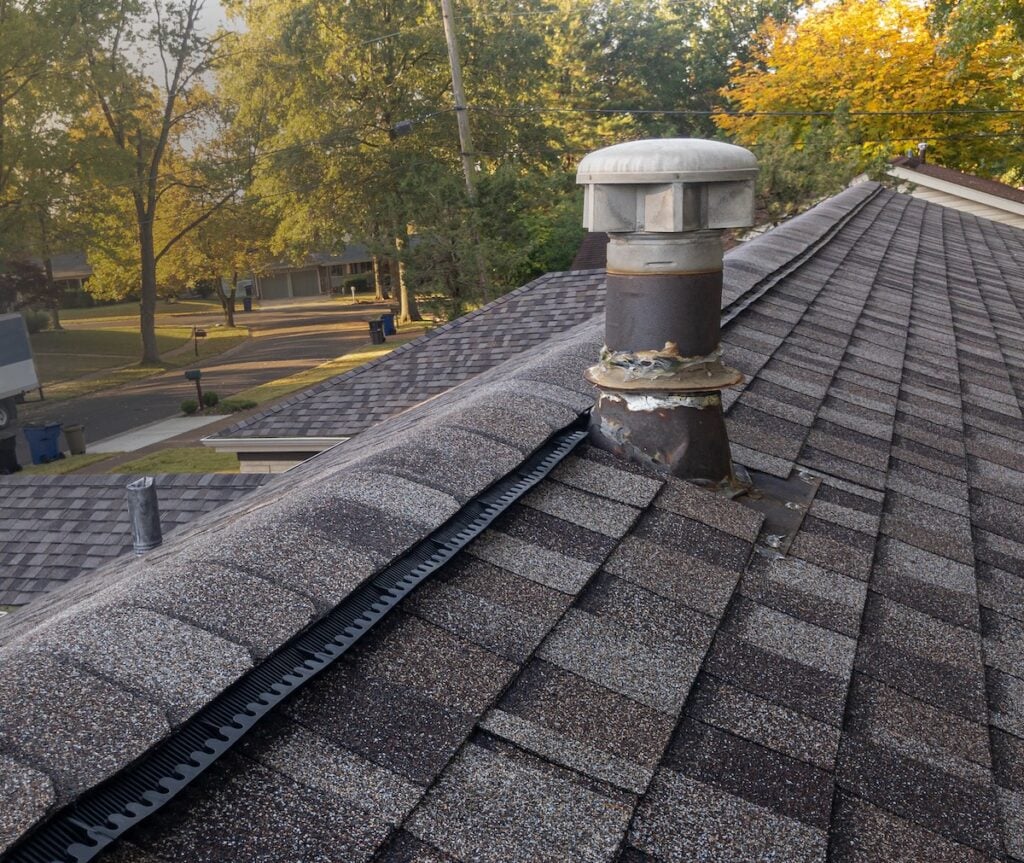Understanding the different types of roof vents is key to maintaining a healthy, long-lasting roofing system. Roof ventilation helps regulate attic temperature, reduce moisture buildup, and extend the life of your shingles or flat roof system—especially in Nebraska’s changing seasons.
Without proper ventilation, hot air and humidity can get trapped in your attic. That leads to problems like mold growth, premature aging of roofing materials, and higher energy bills. The right roof vent can prevent these issues and help your roof function as efficiently as possible.
In this blog, we’ll break down:
- Common roof vent styles: What they are and how they work
- When each type makes the most sense: Based on roof structure and climate
- What to consider when upgrading: Factors like energy efficiency and airflow balance
Whether you’re building a new home or replacing your current system, choosing the right roof vent can make a big difference, get professional help if needed.
💨 Why Roof Ventilation Matters
Roof vents allow warm, moist air to escape from your attic and help cooler air enter from below. This airflow helps maintain consistent temperatures throughout your roof system and reduces the risk of damage.

Here’s what proper ventilation does for your home:
- Prevents moisture buildup: Helps avoid mold, rot, and insulation damage.
- Extends roof lifespan: Keeps shingle temperatures stable and prevents warping.
- Improves energy efficiency: Reduces the workload on your HVAC system.
- Supports warranty coverage: Some manufacturers require proper ventilation for warranty eligibility.
Now let’s take a closer look at the most common roof vent types available. Proper airflow impacts not only your shingles but all the critical roof parts working together to protect your home.
📋 7 Types of Roof Vents You Should Know
Each vent type has a specific purpose and works best in certain situations. Below is a breakdown of the most widely used vent styles and how they support roof health.

1. Ridge Vents
Installed along the peak of your roof, ridge vents are long and low-profile, blending seamlessly with the roofline.
- Balanced ventilation: Runs the full length of the ridge for consistent airflow.
- Aesthetic appeal: Nearly invisible from the ground.
- Best when paired with: Soffit vents for intake.
2. Soffit Vents
Soffit vents are installed underneath the roof’s overhang (eaves) to allow cooler air into the attic.
- Essential intake system: Draws in fresh air that pushes hot air out through exhaust vents.
- Prevents heat buildup: Keeps air moving through the attic year-round.
- Usually paired with: Ridge, box, or gable vents.
3. Box Vents (Static Vents)
For larger or low-slope homes, pairing box vents with the right flat roof materials can maximize efficiency.
- Simple and effective: No moving parts means low maintenance.
- Budget-friendly: A cost-effective option for many homes.
- Requires multiple units: Best used on larger roofs or with soffit vents.
4. Gable Vents
Located at the peak of the gable ends (sidewalls), these vents allow air to escape through the attic’s highest points.
- Passive airflow: Works with natural wind direction to pull air out.
- Adds a decorative element: Comes in various shapes and finishes.
- Best for: Homes with gable-style rooflines.
5. Turbine Vents (Whirlybirds)
These spinning vents use wind power to create suction and pull hot air out of the attic.
- Energy-free ventilation: Operates without electricity or solar power.
- Highly effective in windy areas: Great for open, breezy neighborhoods.
- May be noisy: Can produce sound when spinning at high speeds.
6. Power Vents (Electric or Solar)
These vents use a motor to actively pull hot air out of the attic. Available in electric or solar-powered models.
- High-performance ventilation: Quickly removes heat and moisture.
- Smart sensor options: Many models activate based on temperature or humidity.
- Requires power source: May increase energy use unless solar-powered.
7. Cupola Vents
Often seen on barns or historic homes, a cupola vent is a small structure that rises above the roofline.
- Classic design element: Adds charm and architectural interest.
- Functional and decorative: Allows warm air to rise and exit naturally.
- Best for: Farmhouses or homes with traditional designs.
✅ How to Choose the Right Roof Vent System
There’s no one-size-fits-all solution when it comes to roof ventilation. The best system for your home depends on:
- Roof type and slope: Some vents work better with gable roofs, while others are ideal for low-slope systems.
- Home size and attic space: Larger homes may need multiple vent styles for full coverage.
- Airflow balance: Exhaust vents must be paired with proper intake vents like soffits.
- Aesthetic preferences: Some vents are nearly invisible, while others become part of your home’s design.
A balanced system (intake and exhaust working together) will provide the best results—No matter which style you choose, professional roof vent installation ensures the system performs as designed.

⚠️ Signs Your Roof May Need Better Ventilation
If you’re unsure whether your current system is doing its job, watch for these common warning signs:
- Hot attic spaces: Especially noticeable during summer months.
- Mold or mildew odors: A sign of trapped moisture in the attic.
- Ice dams in winter: Warm attic air melts snow, which then refreezes at the eaves.
- Peeling paint or warped shingles: Often due to excessive attic heat.
If you’re seeing any of these issues, it may be time to upgrade or rebalance your vent system. Ignoring warning signs often leads to damage that increases overall roof repair cost.
🏠 Keep Your Roof Ventilated and Your Investment Protected
Ventilation plays a critical role in protecting your roofing system and your home’s long-term performance. Still deciding which option works best? Explore the different types of roof vents to compare benefits in more detail.
At J-Tech Construction & Solar, we install and service all types of residential and commercial roof vent systems. Our team can assess your attic airflow, recommend the best vent types, and make sure everything is working to protect your investment.
Reach out to J-Tech today for your free estimate and take the first step toward a stronger, longer-lasting roof.






